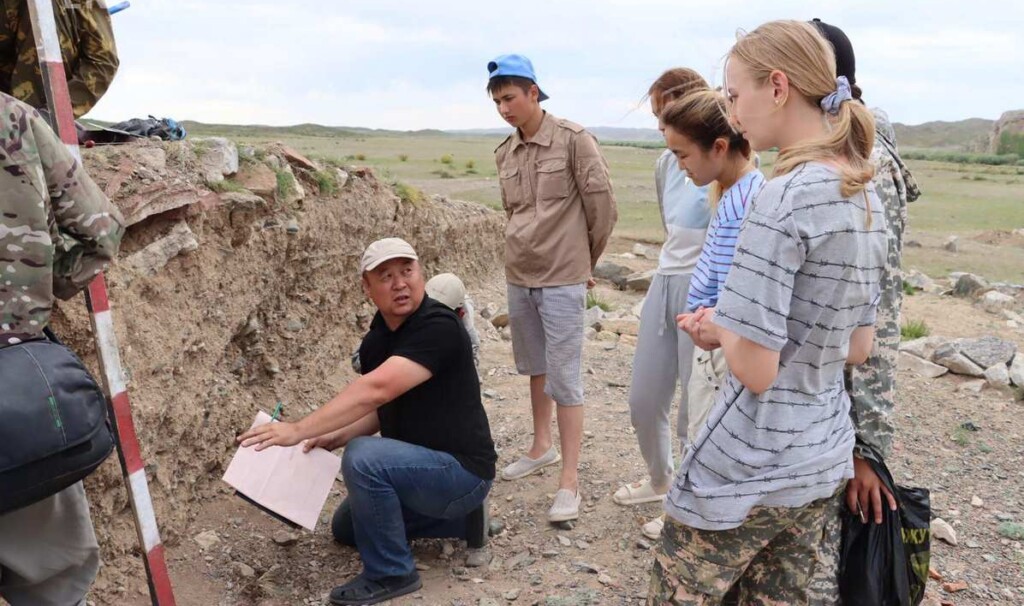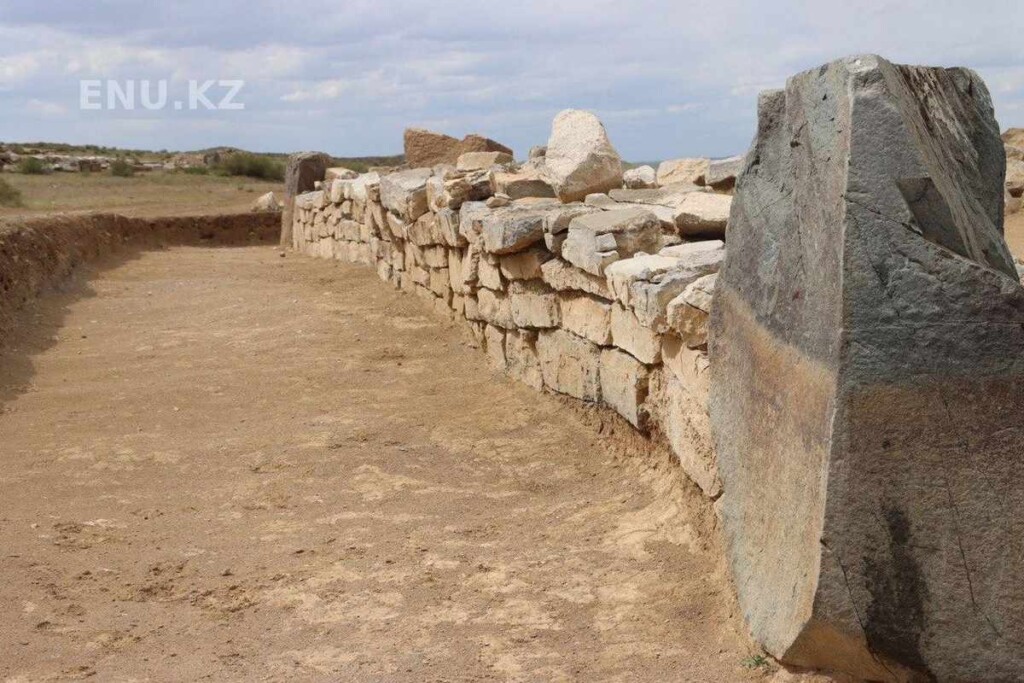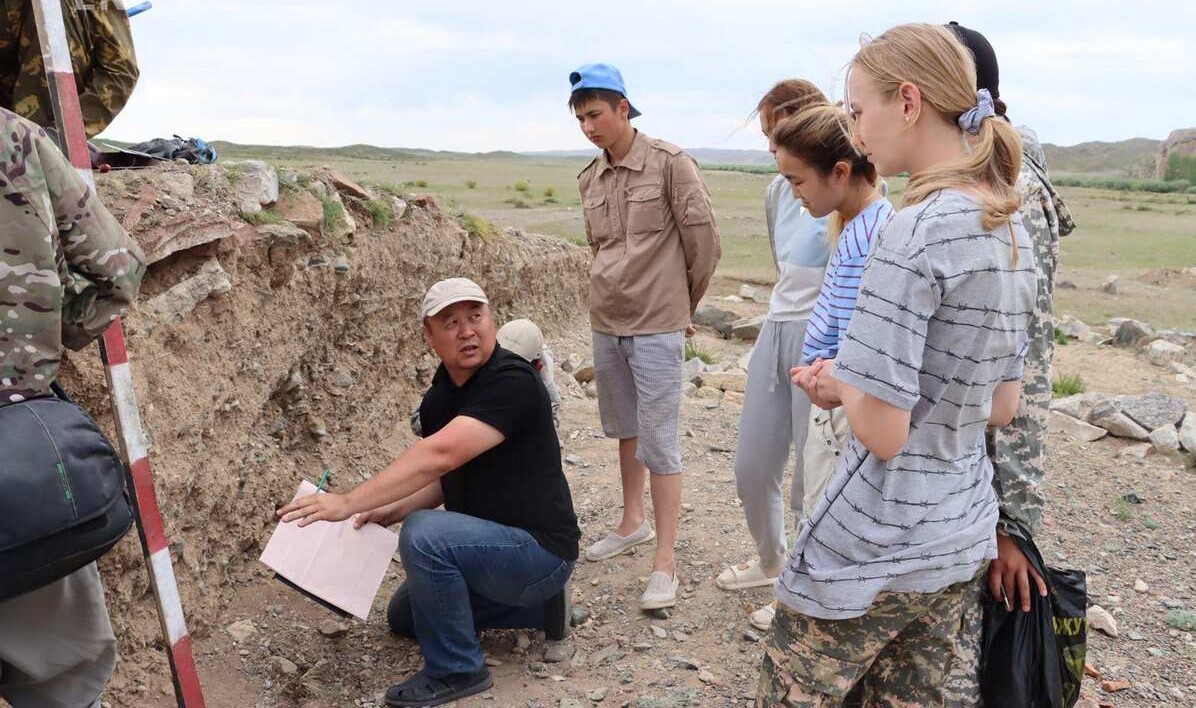
A large hexagonal step pyramid has been discovered in the most unlikely place: the grassy steppes of Kazakhstan.
While typical of Mesopotamian, Egyptian, Mesoamerican, Nubian, and some South and East Asian cultures, the nomadic horse tribes of the steppe are not known for monumental stone pyramidal architecture.
Nevertheless, dating back 4,000 years ago to the Bronze Age, the step pyramid (or is it a steppe pyramid) is 500 square meters in area, and is described by a national team of archaeologists as a “sophisticated and complex structure.”
Located in a place called Kyrkungir near Toktamys village in the Abai region of Kazakhstan’s far east, interest in the site arose in 2014 when funerary mounds were discovered there containing burial goods of ceramic vessels, food offerings, bronze beads, and other jewelry.
Announced recently by the Archaeology and Ethnology Department of the Eurasian National University, the pyramid has been under excavation for some time, and is the first to ever be found on the Eurasian steppes.
“The steppe pyramid is built with great precision, it is hexagonal. There are thirteen meters and eight rows of stones between each face,” said Ulan Umitkaliyev, head of the department, in a statement.
A much larger black stone with a flat top was arranged in the corner of each face.

“It is a very sophisticated complex structure with several circles in the middle. The exterior walls of the structure of this complex are dominated by images of various animals, especially horses.”
These decorations have led the team to believe that the pyramid may have been a worship center for a horse cult. Thought to have occurred sometime between 1,000 and 200 years before the construction of the pyramid, the domestication of the horse changed the lives of steppe peoples, from the ancient Saka and Butai cultures to the Mongols of the Middle Ages, forever.
MORE ARCHAEOLOGY: Pre-Incan ‘Floor of Thunder’ Found Where Ritual Dances Atop Stone Platform Made Booming Footsteps Like Thunder
With six sides, each measuring 13.8 meters in length, the total footprint of the structure would span around 500 square meters, or around 5,300 square feet—the same as a luxurious American home with a 3-car garage. It’s unclear how high the pyramid would have been.
Long appreciated in the historical record for their roles as conquerors, warriors, and traders, it seems there is still more to be learned of the people of the steppe.
SHARE This Groundbreaking New Discovery With Your Friends…




















